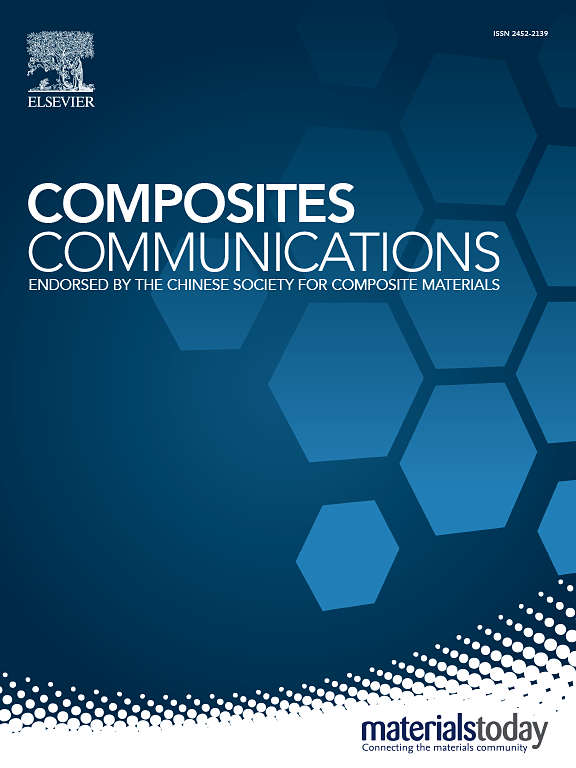Enhancing Bi-directional thermal conductivity: A novel tri-layer graphene-liquid metal composite for advanced thermal management
IF 6.5
2区 材料科学
Q1 MATERIALS SCIENCE, COMPOSITES
引用次数: 0
Abstract
The rapid advancement of electronic devices demands the development of high-performance thermal conductive materials for efficient thermal management. This study presents a novel composite thermal conductive film featuring a unique sandwich structure designed to overcome critical challenges in thermal management. The composite is constructed using a graphene-carbon fiber matrix encapsulating liquid metal as the core layer, enclosed between graphene membranes. This design harnesses graphene's exceptional in-plane thermal conductivity, mechanical stability, and isolation properties; carbon fiber's structural support and lateral sealing; and liquid metal's superior thermal conductivity and gap-filling capabilities. The resulting film achieves outstanding thermal performance, with an in-plane thermal conductivity of 106.1 W/mK and a through-plane thermal conductivity of 43.1 W/mK. The sandwich structure effectively suppresses liquid metal leakage and corrosion under high-pressure conditions, while retaining robust mechanical integrity. Unlike common thermal interface materials, this three-layer structure performs distinct thermal management functions. The bottom layer, a graphene film, acts as a heat-spreading layer, transforming point conduction into faster surface conduction. The middle layer is a flexible vertical heat conduction layer, serving as a highway for heat transfer. The top layer efficiently dissipates heat due to graphene's excellent radiative properties. This composite material can thus be used not only as a thermal interface material but also as a heat dissipation material in small mobile electronic devices.

求助全文
约1分钟内获得全文
求助全文
来源期刊

Composites Communications
Materials Science-Ceramics and Composites
CiteScore
12.10
自引率
10.00%
发文量
340
审稿时长
36 days
期刊介绍:
Composites Communications (Compos. Commun.) is a peer-reviewed journal publishing short communications and letters on the latest advances in composites science and technology. With a rapid review and publication process, its goal is to disseminate new knowledge promptly within the composites community. The journal welcomes manuscripts presenting creative concepts and new findings in design, state-of-the-art approaches in processing, synthesis, characterization, and mechanics modeling. In addition to traditional fiber-/particulate-reinforced engineering composites, it encourages submissions on composites with exceptional physical, mechanical, and fracture properties, as well as those with unique functions and significant application potential. This includes biomimetic and bio-inspired composites for biomedical applications, functional nano-composites for thermal management and energy applications, and composites designed for extreme service environments.
 求助内容:
求助内容: 应助结果提醒方式:
应助结果提醒方式:


